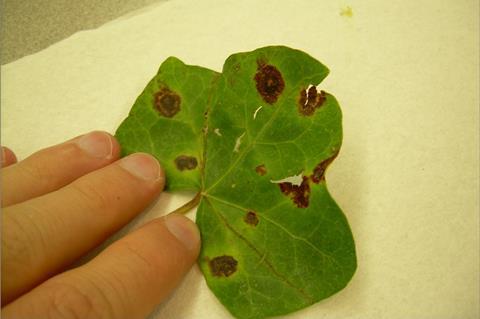The plant immune system is a highly specialized and sensitive network of defences that serves to repel pathogenic microbes that would seek to exploit plant resources. Therefore, plants constantly survey their surroundings for bacterial features that function as alarm signals for the presence of potential invaders.

One of the most common features is a short pattern in bacterial flagellin, the protein that makes up the hair-like appendage that allows bacteria to move. Plant immune responses, which involve a reallocation of resources from growth to defence, are activated upon recognition of flagellin by a plant receptor called FLS2.
However, flagellin is possessed not only by pathogenic bacteria but also by those who are in commensal relationships with their plant hosts, who accommodate a diverse collection of microbes known as the microbiota. How then do commensal bacteria, which are ubiquitous on all plants and far outnumber pathogenic bacteria on healthy plants, colonize and persist on their hosts? Scientists now have a better understanding of this seeming contradiction.
Immunosuppression by plant commensals
The research, published in Nature Plants and led by co-corresponding authors Ka-Wai Ma and Paul Schulze-Lefert, knew from previous work that 40% of all bacteria found on healthy roots, including bacteria from the order Xanthomonodales – a core order of the plant microbiota – possess the ability to suppress plant immune responses, as determined by their ability to alleviate the root growth inhibition associated with flagellin recognition.
In more focused analysis, first author Jana Ordon and colleagues found that immunosuppression is in fact widely conserved across the Xanthomonadales. Homing in on one of these suppressive Xanthomonodales strains, R179, they could determine that R179 uses a combination of different mechanisms to achieve this alleviation.
READ MORE: Study reveals key role of plant-bacteria communication in assembly of a healthy plant microbiome
READ MORE: Plant prebiotics offer new ally in the fight against pathogens
In one, R179 eliminates flagellin and other danger molecules that would activate the plant immune response. The scientists also identified two R179 transporter components that may function to shuttle immunosuppressive molecules into the space between the bacterium and the plant host. Thus, commensal bacteria unexpectedly possess, like pathogens, a repertoire of mechanisms to bypass plant immune responses.
Adapting to plant root habitats
By analysing plant responses in detail, the group of researchers could establish the significance of this immunosuppression for root-associated bacterial communities. They determined that R179, which itself contains immunogenic molecules, can not only block its own recognition by the plant, but can also include other members of the microbial communities in its camouflage. Thus, while R179 itself does not harbour the flagellin protein, its ability to suppress immune responses activated by flagellin provides it with a competitive advantage in a community, i.e., allowing it to outgrow non-immunosuppresive bacteria.
The Xanthomonadales are a core order of the plant microbiota and seem to be specialized for surviving and thriving in soil and plant root habitats. The authors’ findings show that the widespread ability to modulate plant immune responses probably contributed to this specialization and their core membership in the microbiota.







No comments yet